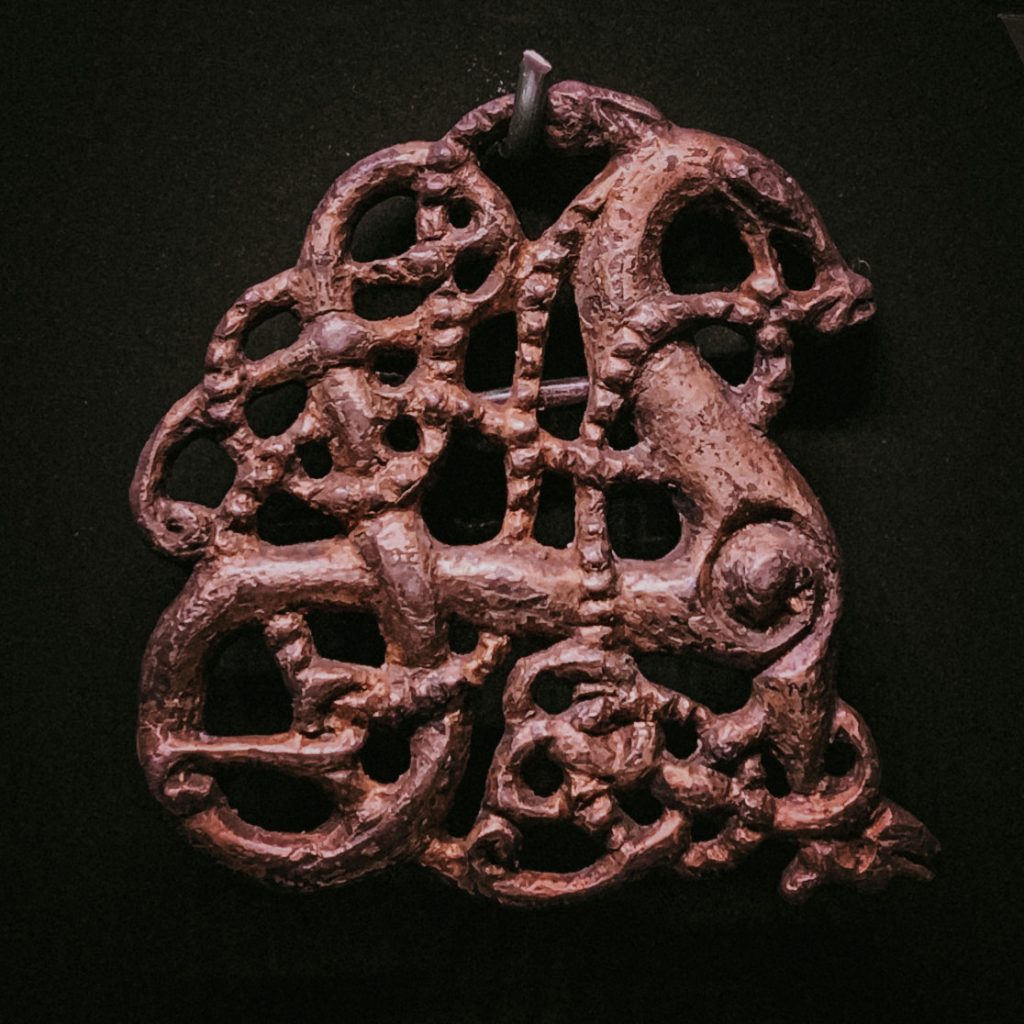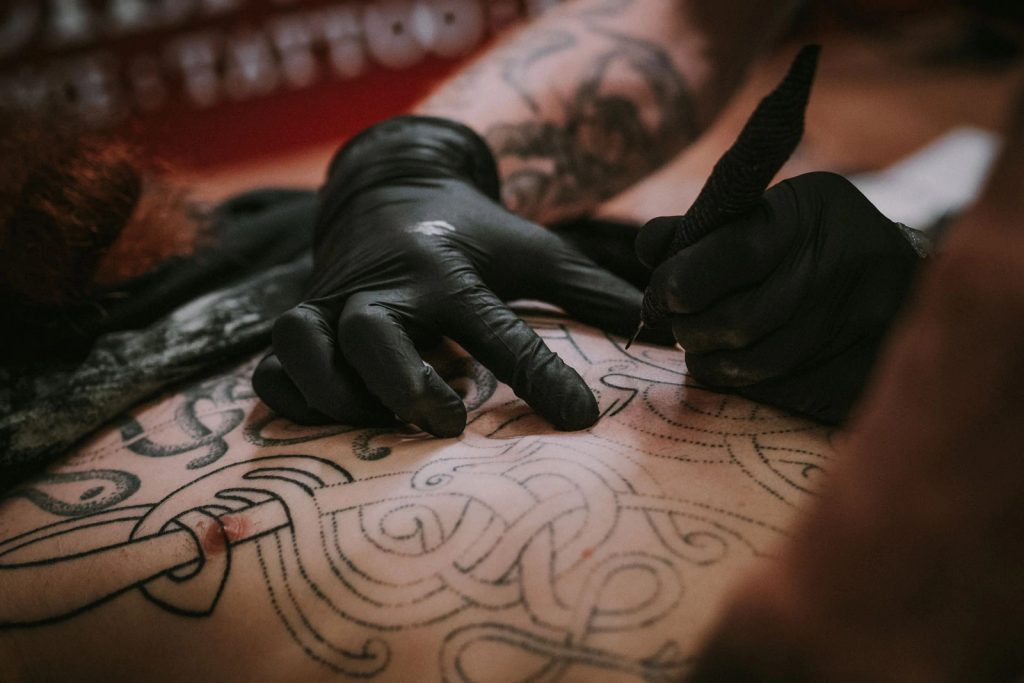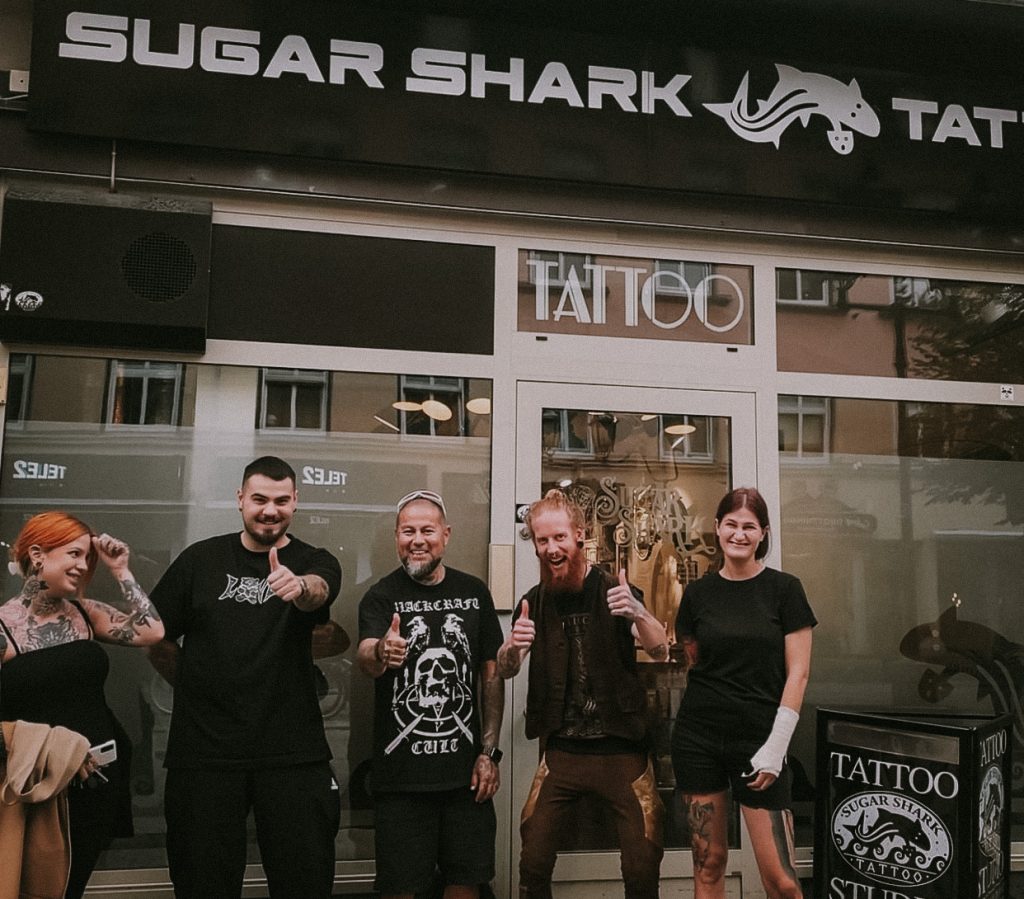
Urnes Style (1050 to 1150 A.D.)
The Urnes Style was the last phase of Scandinavian animal art during the second half of the 11th century and in the early 12th century.[17] The Urnes Style is named after the northern gate of the Urnes stave church in Norway, but most objects in the style are runestones in Uppland, Sweden, which is why some scholars prefer to call it the Runestone style.[17]
The style is characterized by slim and stylised animals that are interwoven into tight patterns.[17] The animals heads are seen in profile, they have slender almond-shaped eyes and there are upwardly curled appendages on the noses and the necks.
Early Urnes Style
The early style has received a dating which is mainly based on runestone U 343, runestone U 344 and a silver bowl from c. 1050, which was found at Lilla Valla.[18] The early version of this style on runestones comprises England Runestones referring to the Danegeld and Canute the Great and works by Åsmund Kåresson.[18]
Mid-Urnes Style
The mid-Urnes Style has received a relatively firm dating based on its appearance on coins issued by Harald Hardrada (1047–1066) and by Olav Kyrre (1080–1090). Two wood carvings from Oslo have been dated to c. 1050–1100 and the Hørning plank is dated by dendrochronology to c. 1060–1070.[19] There is, however, evidence suggesting that the mid-Urnes style was developed before 1050 in the manner it is represented by the runemasters Fot and Balli.[19]
Late Urnes Style
The mid-Urnes Style would stay popular side by side with the late Urnes style of the runemaster Öpir.[19] He is famous for a style in which the animals are extremely thin and make circular patterns in open compositions.[19] This style was not unique to Öpir and Sweden, but it also appears on a plank from Bølstad and on a chair from Trondheim, Norway.[19]
The Jarlabanke Runestones show traits both from this late style and from the mid-Urnes style of Fot and Balli, and it was the Fot-Balli type that would mix with the Romanesque style in the 12th century.
Urnes-Romanesque Style
The Urnes-Romanesque Style does not appear on runestones which suggests that the tradition of making runestones had died out when the mixed style made its appearance since it is well represented in Gotland and on the Swedish mainland.[20] The Urnes-Romanesque Style can be dated independently of style thanks to representations from Oslo in the period 1100–1175, dendrochronological dating of the Lisbjerg frontal in Denmark to 1135, as well as Irish reliquaries that are dated to the second half of the 12th century.[20]
Image: Ancientskin.de
Text-Quelle: wikipedia.org/wiki/Viking_art

